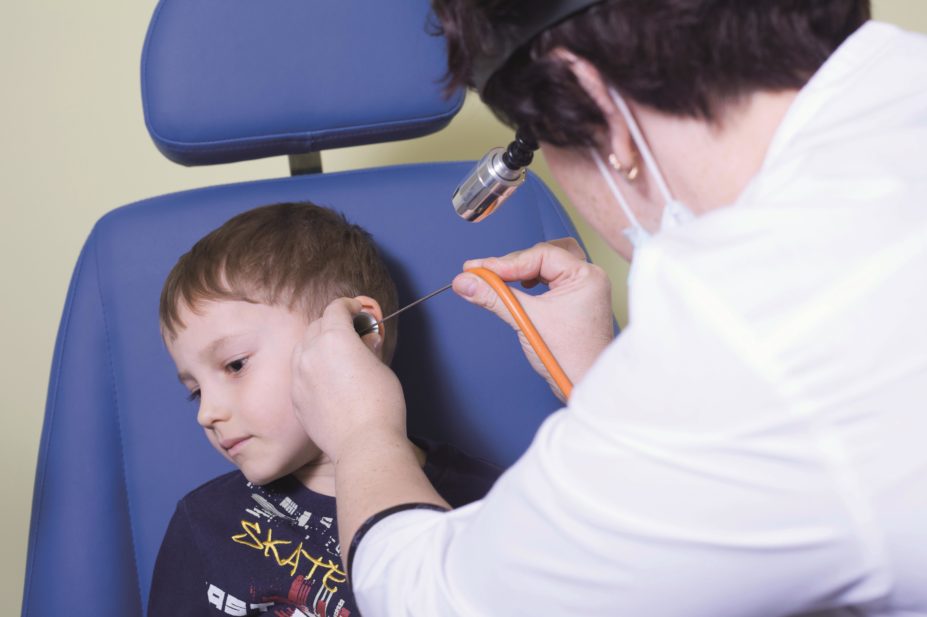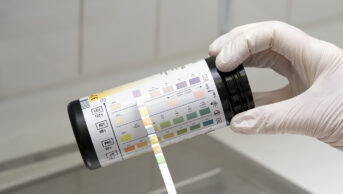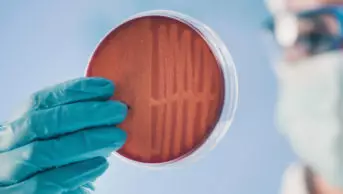
Shutterstock
A one-dose application of an antibiotic gel into the ear could make it easier to treat middle ear infections in children, say US researchers.
The team from Boston Children’s Hospital, Massachusetts, have developed a bioengineered gel that hardens in the ear canal, delivering a steady dose of antibiotics across the eardrum to the source of infection.
Study author Daniel Kohane, professor of anaesthesia at Harvard Medical School, says the problem with oral antibiotics is not effectiveness but that it is difficult to administer them to toddlers three times a day, that they can cause systemic side effects, and that if the full course is not given there is a risk of antibiotic-resistant bacteria developing.
“Our treatment would be applied once, directly to the eardrum, at the time of diagnosis and would provide an entire regimen of therapy,” he says.
“Since the treatment would be applied directly to the ear, [the] drug does not distribute significantly throughout the body.”
Reporting on the ‘transtympanic’ delivery system in Science Translational Medicine
[1]
(online, 14 September 2016), the researchers say it could overcome the problem of compliance with oral antibiotics in young children with otitis media.
When tested in rodents (chinchillas), the gel was designed specifically to flow into the ear before forming a ‘mechanically strong’ hydrogel on the eardrum.
As part of the drug delivery system, the US Food and Drug Administration approved chemical permeation enhancers that insert themselves into the membrane, providing channels for drugs – in this case ciprofloxacin – to permeate across the eardrum into the middle ear.
The early study found that in ten chinchillas the antibiotic gel was biocompatible in the ear, completely cleared otitis media infection within seven days, and was undetectable in the bloodstream.
Use of the gel did cause modest hearing loss temporarily – similar to the effect of ear wax, the researchers report – which would likely resolve as the gel dissolved over a three-week period.
Kohane adds that his team are doing more work on the biological consequences of the treatment and are hoping to form a company to begin testing the gel in patients.
Ralph Holme, head of biomedical research at charity Action on Hearing Loss, says that persistent middle ear infections in children can lead to hearing loss, often at a crucial time of development when they are learning to speak.
“Currently, the treatments available are not always effective which is why we support research to find better ways to treat this prevalent condition,” says Holme.
“To be able to deliver sustained levels of antibiotic directly to the middle ear without the need for invasive injections through the eardrum could really revolutionise the way we treat middle ear problems.”
Otitis media is extremely common in infants and young children. The NHS estimates that around one in four children experience at least one middle ear infection by the time they are ten years old.
In the UK, antibiotics are usually reserved for severe or persistent symptoms, such as discharge from the ear, or if a young child has the infection in both ears.
References
[1] Yang R, Sabharwal V, Okonkwo OS et al. Treatment of otitis media by transtympanic delivery of antibiotics. Science Translational Medicine 2016;8:356ra120. doi: 10.1126/scitranslmed.aaf4363


